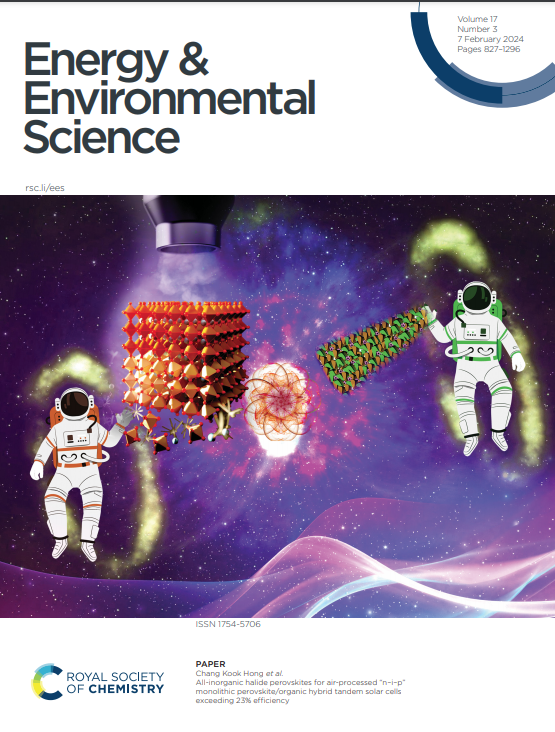地球颗粒高温热能储存的工业脱碳潜力
IF 30.8
1区 材料科学
Q1 CHEMISTRY, MULTIDISCIPLINARY
引用次数: 0
摘要
工业脱碳需要高效的高温热能储存(HT-TES)系统,能够在1000°C以上持续运行。然而,开发可扩展,经济,高性能的高温tes材料,可以保持这些温度是具有挑战性的。在此,我们系统地评估了地面颗粒作为高温工业高温tes的潜力,考虑了资源可用性、可扩展性和长期储存的成本效益等关键因素。通过优化颗粒制造和系统设计,我们展示了将这些材料与现有工业基础设施集成在一起的可行性,从而实现高温下长时间的热能储存。一项生命周期比较评估显示,与合成替代品相比,地面颗粒HT-TES系统每年可减少全球二氧化碳排放量70 - 230万吨,为能源密集型行业脱碳提供了可扩展的途径。本文章由计算机程序翻译,如有差异,请以英文原文为准。
Industrial Decarbonization Potential of Earth-based Particulate High-temperature Thermal Energy Storage
Industrial decarbonization demands efficient high-temperature thermal energy storage (HT-TES) systems capable of sustained operation above 1000 °C. However, developing scalable, economical, and high-performing HT-TES materials that can withhold these temperatures are challenging. Herein, we systematically evaluate the potential of earth-based particulates as HT-TES for high-temperature industries, considering key factors such as resource availability, scalability, and cost-effectiveness for long-duration storage. Through optimizing particulate manufacturing and system design, we show the feasibility of integrating these materials with existing industrial infrastructure to enable long-duration thermal energy storage at high temperatures. A comparative life cycle assessment reveals that earth-based particulate HT-TES systems could reduce global CO2 emissions by 0.7-2.3 million tonnes annually compared to synthetic alternatives, offering a scalable pathway to decarbonize energy-intensive industries.
求助全文
通过发布文献求助,成功后即可免费获取论文全文。
去求助
来源期刊

Energy & Environmental Science
化学-工程:化工
CiteScore
50.50
自引率
2.20%
发文量
349
审稿时长
2.2 months
期刊介绍:
Energy & Environmental Science, a peer-reviewed scientific journal, publishes original research and review articles covering interdisciplinary topics in the (bio)chemical and (bio)physical sciences, as well as chemical engineering disciplines. Published monthly by the Royal Society of Chemistry (RSC), a not-for-profit publisher, Energy & Environmental Science is recognized as a leading journal. It boasts an impressive impact factor of 8.500 as of 2009, ranking 8th among 140 journals in the category "Chemistry, Multidisciplinary," second among 71 journals in "Energy & Fuels," second among 128 journals in "Engineering, Chemical," and first among 181 scientific journals in "Environmental Sciences."
Energy & Environmental Science publishes various types of articles, including Research Papers (original scientific work), Review Articles, Perspectives, and Minireviews (feature review-type articles of broad interest), Communications (original scientific work of an urgent nature), Opinions (personal, often speculative viewpoints or hypotheses on current topics), and Analysis Articles (in-depth examination of energy-related issues).
 求助内容:
求助内容: 应助结果提醒方式:
应助结果提醒方式:


